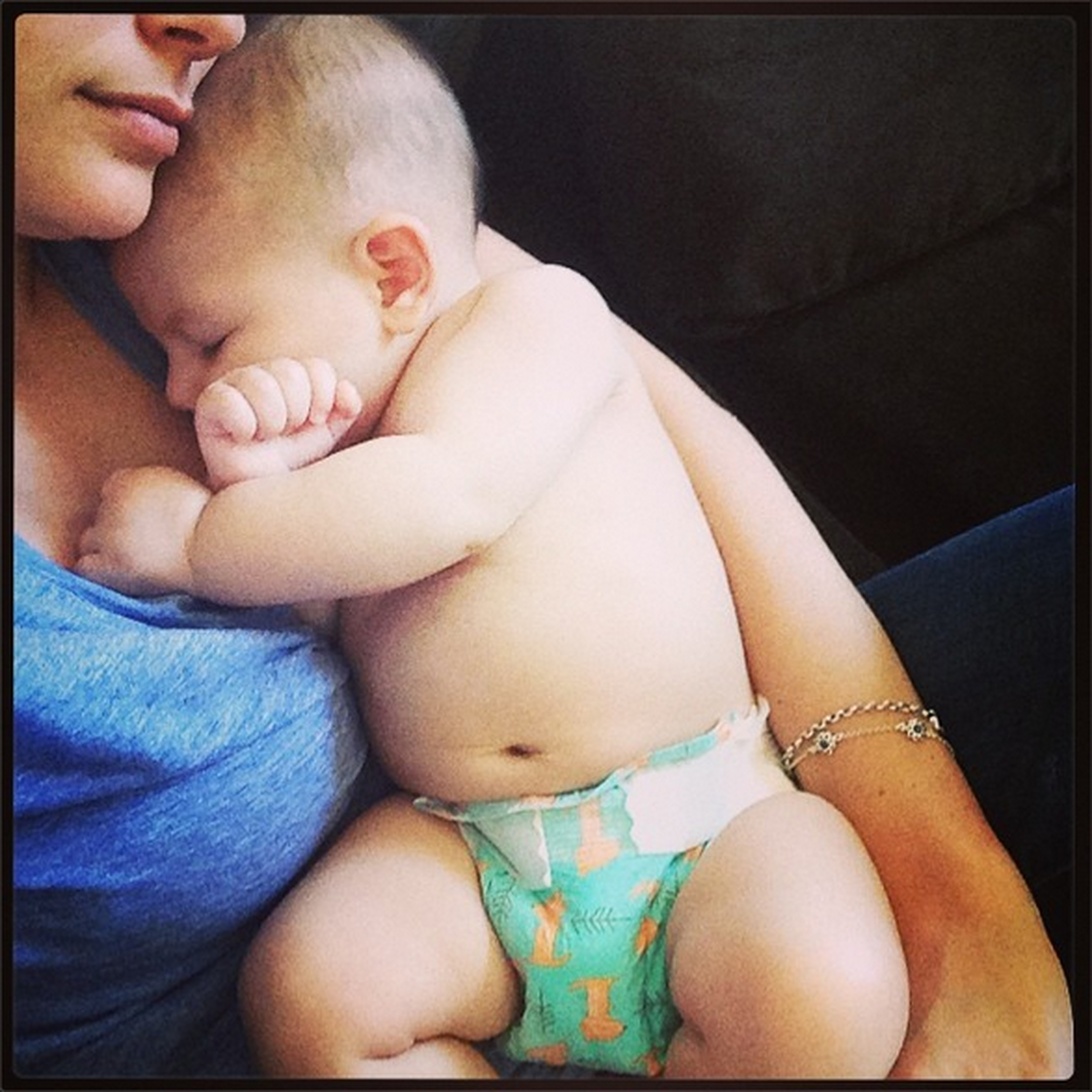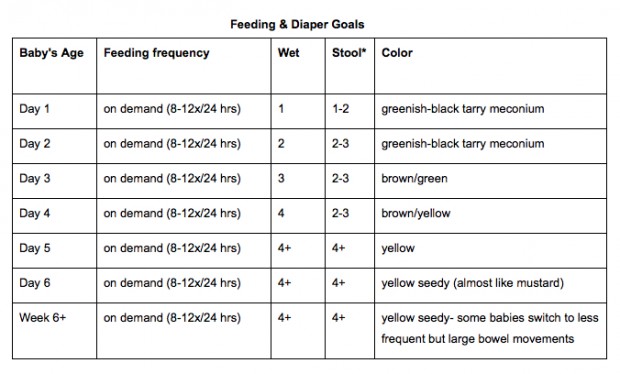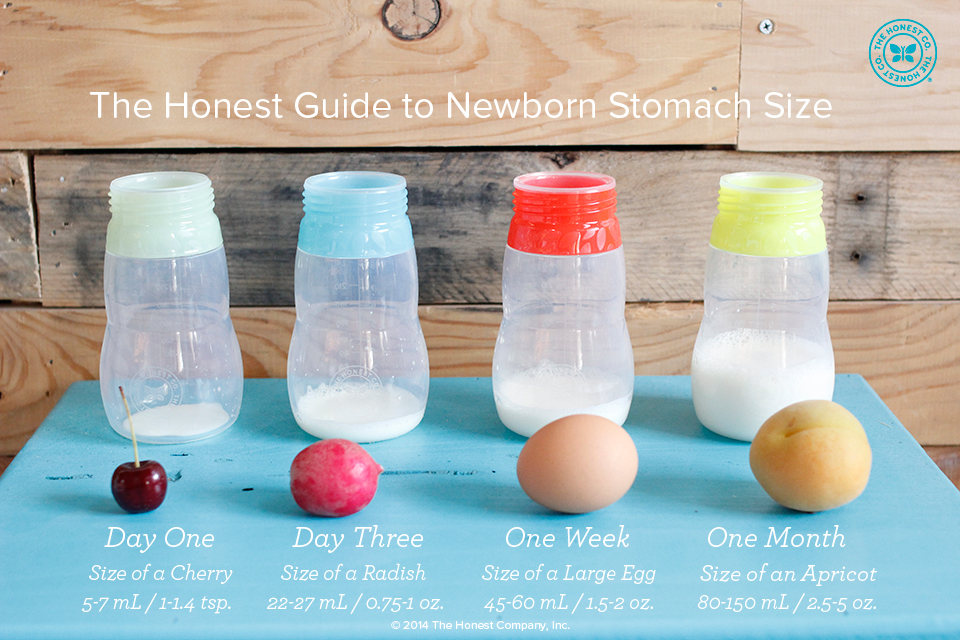It’s a classic concern common among new (and experienced) breastfeeding moms: Because there aren’t measurement markers on our breasts (wouldn’t that be amazingly convenient and awesome?!), we can’t really know exactly how much milk our babies receive when feeding. The good news is most women produce enough milk to nurse their babies successfully; only a small percentage of all breastfeeding mothers truly have a low milk supply. Here’s a handy Honest guide to ensure that your baby is getting what they need so you can get some peace of mind:
Weight Gain & Appearance
A 7-10% weight loss during the first 3-4 days after birth is considered normal for an exclusively breastfed baby. More than 10% can be an indication that the breastfeeding needs to be evaluated. It’s a good idea to have a routine weight check at 5 days (either with your pediatrician or with a lactation consultant) because by that point your baby should be gaining rather than losing. Also, if you and your baby are experiencing any problems they can be caught and remedied early. Check out this handy chart to see how your baby’s weight gain is progressing (notice that it slows down as time progresses):
| Age | Weight Gain (Per Week) |
| 0-3 months | 4-7 ounces (110-200 grams) |
| 4-6 months | 4-5 ounces (110-140 grams) |
| 6-12 months | 2-4 ounces (60-110 grams) |
- Is your baby eager to nurse?
- Is your baby peeing and pooping well? (see below)
- Are your baby’s eyes bright & alert?
- Is your baby’s skin a healthy color and texture?
- Is your baby meeting developmental milestones?
Diapers
Counting your baby's diapers (pee and poop) can be a helpful tool for indicating whether or not he is getting enough of your breastmilk--what goes in, must come out! In general, babies will increase the volume and frequency of the pee and poop each day as they are able to take in more breastmilk and as the composition of the breastmilk changes to meet their needs. See the chart below for a quick reference about what to expect in the first few days/weeks.
If you suspect you aren't making enough milk or your baby is not feeding well, call your doctor and a lactation consultant (IBCLC) right away.
Feeding & Diaper Goals
*Stools should be at least 2.5 cm (the size of a quarter) to “count.” If it’s just a little “smear” in the diaper, that’s not technically a stool.
Breastfeed Often
A baby needs to breastfeed frequently, including nighttime. Your breastmilk is digested quickly and easily, and you only need small amounts to fill your baby's tiny tummy. Check out our handy guide to your baby’s developing stomach sizes and feeding measurements below:
Frequent feedings also help to establish your milk supply. This is the concept of supply and demand at its best—the more milk that is removed from your breasts, the more milk your body will produce. Frequent feedings are good for both of you!
- A newborn should feed at least 8 to 12 times in a 24-hour period.
- Allow baby to determine the length of feedings: See our blog post on understanding your baby’s hunger and satiety cues for more information on baby led feedings.
- Keep in mind that some babies "cluster feed," which means that they go to the breast very often in a short period of time, and then sleep for several hours. This does not mean that you do not have enough milk for them; it’s a common feeding practice among infants. Sometimes, it’s a cue to your body to increase milk supply when your baby is about to enter a growth spurt. The number of feedings in a 24-hour period is more important than the spacing of feedings.
- A sleepy baby may need to be wakened every two to three hours to feed. You typically need to ensure that your (healthy) baby does not sleep through feedings for the first few months. Talk with your healthcare provider if baby is lethargic and difficult to wake for feedings (or if you have any concerns in general).
Let us know how breastfeeding is going for you in the comments below. We’d also love to hear if you have any breastfeeding-related topics that you’d like addressed in future blog posts!
— Nicole Meadow, MPN, RD, CSP, CLC
image courtesy of @mrsbendesky
References:
The Breastfeeding Atlas, Barbara Wilson-Clay, Kay Hoover. Austin, Texas: LactNews Press, 2013.
We aim to provide you with the most honest and credible information possible. This article was reviewed for accuracy by The Honest Team and was written based on sources that are linked at the bottom of the article.
blog_review_statement





